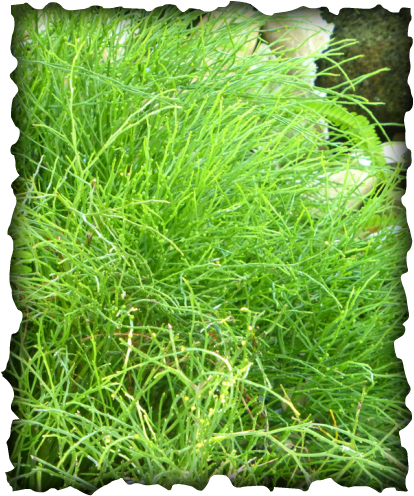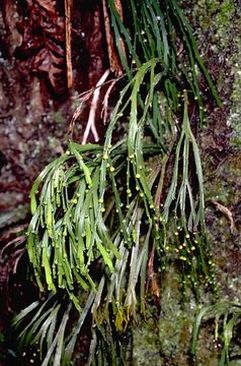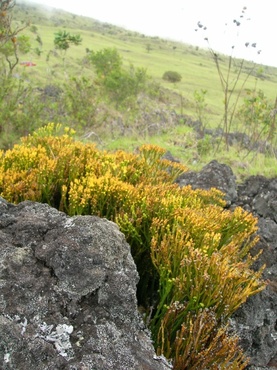|
Here is one indigenous plant that you might find growing around your home without even planting it: Moa, a.k.a moa nahele, or pipi. I find it popping up in odd places, such as in the cracks in the walkway cement, for example, and thriving without any special care from me. There are two species, both found here in Hawaii: Psilotum nudum, the upright whisk fern, which has triangular stems and (yes) grows upright, and Psilotum complanatum, the flat-stemmed whisk fern, that has (yes) flattened stems that curve downward. The two can produce a hybrid known as Psilotum intermedium. These stems can appear as a lovely green, usually when growing in shadier places, and sporting a yellower hue when in full sunlight. The generic name Psilotum is from the Greek psilos, meaning naked, referring to the plant's lack of leaves. They also lack true roots; for anchorage and absorption of water and nutrients, they rely on horizontal stems called rhizomes. Flowers are also absent, and therefore seeds as well. However, a splash of white or yellow color from the sporangia, the reproductive structures that produce spores, adds to their appeal. The silky texture of the spores found use in ancient times as a talcum powder, keeping things comfortable under the loincloth. A children's game, moa nahele was also known, in which children would interlock the stems of the moa, then each pulling apart until one or the other's stem broke. The victor with the unbroken stems proclaimed victory with a loud rooster crow. Stems were used in lei, and continue to be, adding a beautiful texture.
3 Comments
Dana Ritchie Fujikake
8/29/2022 01:02:43 pm
What type of potting compound is best for now?
Reply
Leave a Reply. |
welcomes you to visit with the all the wonderful flora and fauna that we share this lovely aina with. Categories
All
Archives
October 2014
|

About the blogger: Jeanne Lindgren is a science teacher and nature enthusiast. She has taught and traveled throughout Asia and Europe and now makes her home in Honolulu. She welcomes any comments, corrections, questions or compliments on her nature journal, and wishes all who visit here many great nature experiences. Happy trails.



 RSS Feed
RSS Feed